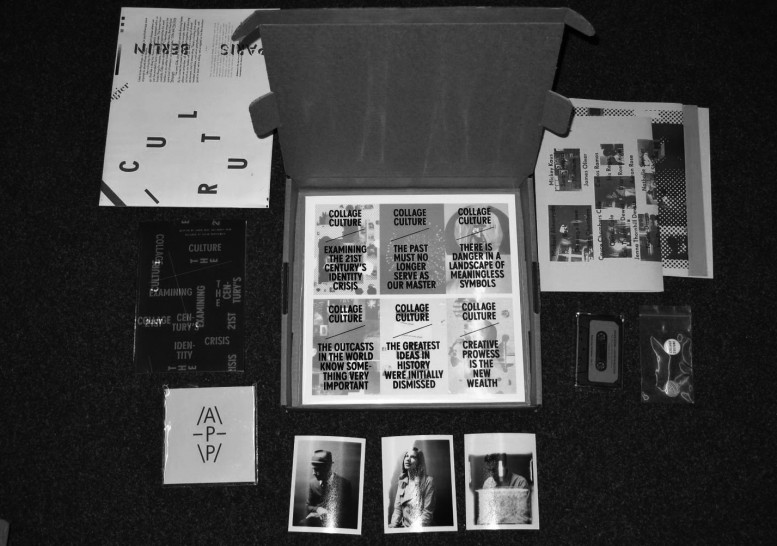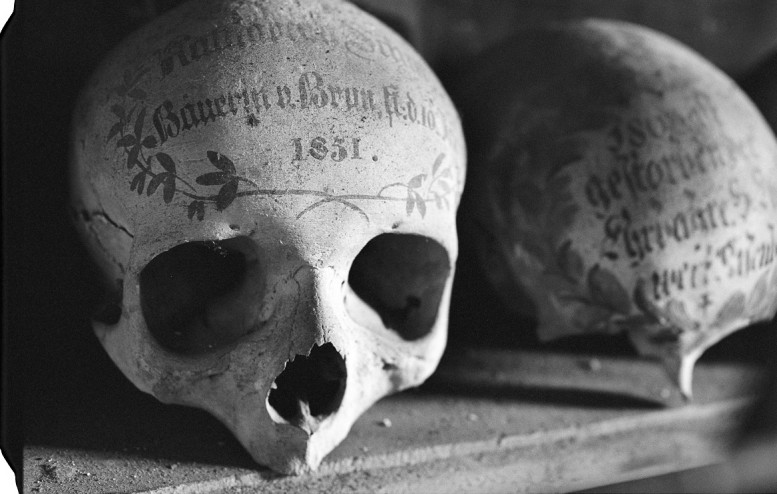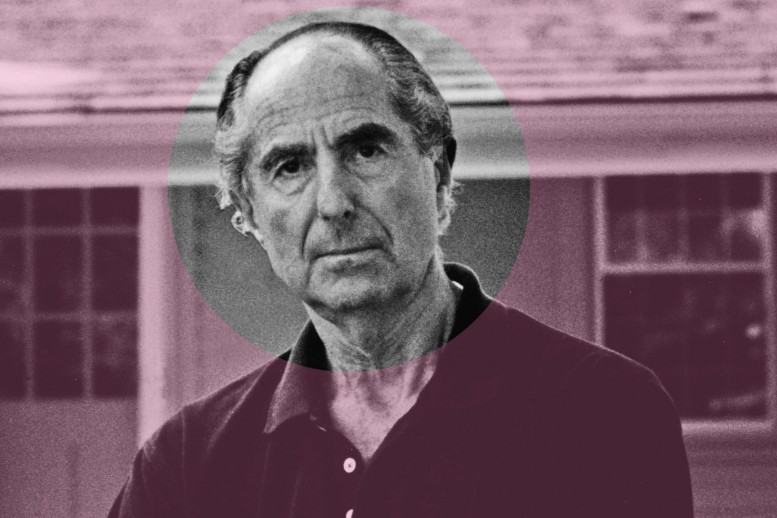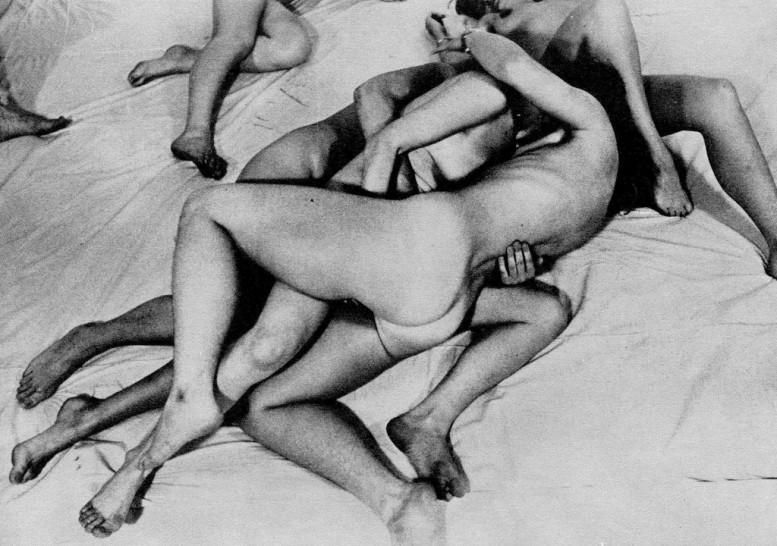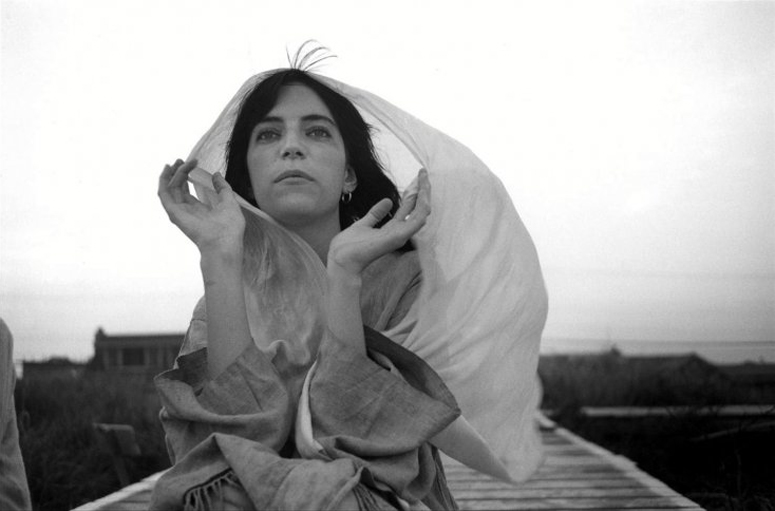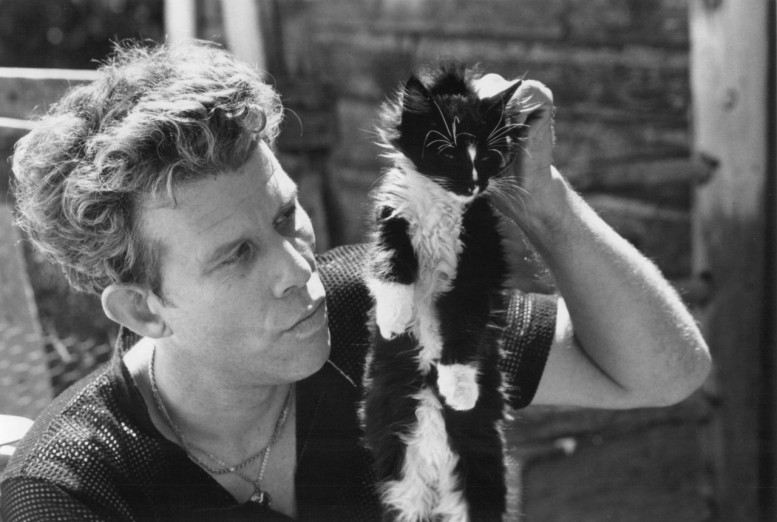One of the coolest new publications of late–Collage Culture: Examining the 21st Century's Identity Crisis

[BOOKS] The Last Nude

A stunning story of love, sexual obsession, treachery, and tragedy, about an artist and her most famous muse in Paris between the world wars. Paris, 1927. In the heady years before the crash, financiers drape their mistresses in Chanel, while expatriates flock to the avant-garde bookshop Shakespeare and Company. One day in July, a young American named Rafaela Fano gets into the car of a coolly dazzling stranger, the Art Deco painter Tamara de Lempicka. Struggling to halt a downward slide toward prostitution, Rafaela agrees to model for the artist, a dispossessed Saint Petersburg aristocrat with a murky past. The two become lovers, and Rafaela inspires Tamara's most iconic Jazz Age images, among them her most accomplished-and coveted-works of art. A season as the painter's muse teaches Rafaela some hard lessons: Tamara is a cocktail of raw hunger and glittering artifice. And all the while, their romantic idyll is threatened by history's darkening tide. Inspired by real events in de Lempicka's history, The Last Nude is a tour de force of historical imagination. Ellis Avery gives the reader a tantalizing window into a lost Paris, an age already vanishing as the inexorable forces of history close in on two tangled lives. Spellbinding and provocative, this is a novel about genius and craft, love and desire, regret and, most of all, hope that can transcend time and circumstance. [Find it here.]
The Sea is My Brother
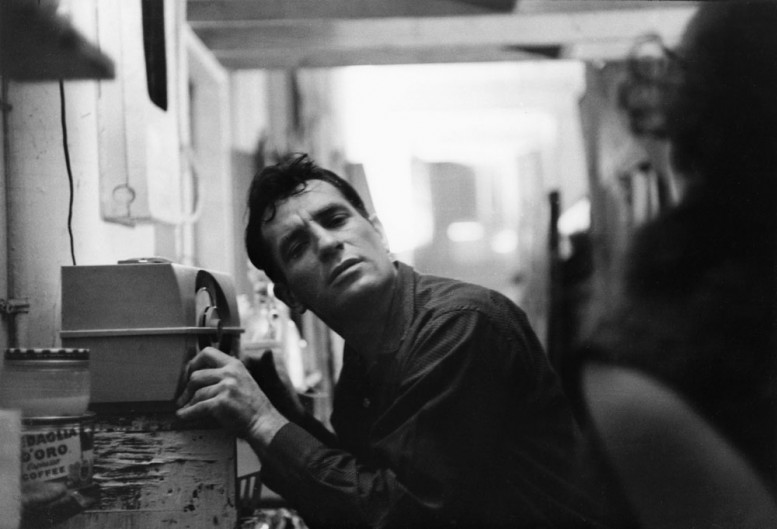 Jack Kerouac's recently discovered novel The Sea is My Brother
Jack Kerouac's recently discovered novel The Sea is My Brother
People's Pornography
Since its establishment in 1949, the People's Republic of China has upheld a nationwide ban on pornography, imposing harsh punishments on those caught purchasing, producing, or distributing materials deemed a violation of public morality. A provocative contribution to Chinese media studies by a well-known international media researcher, People’s Pornography offers a wide-ranging overview of the political controversies surrounding the ban, as well as a fascinating glimpse into the many distinct media subcultures that have gained widespread popularity on the Chinese Internet as a result. Rounding out this exploration of the many new tendencies in digital citizenship, pornography, and activist media cultures in the greater China region are thought-provoking interviews with individuals involved. A timely contribution to the existing literature on sexuality, Chinese media, and Internet culture, People’s Pornography provides a unique angle on the robust voices involved in the debate over about pornography’s globalization.
Patti Smith: Woolgathering

In this small, luminous memoir, the National Book Award–winner Patti Smith revisits the most sacred experiences of her early years, with truths so vivid they border on the surreal. The author entwines her childhood self—and its "clear, unspeakable joy"—with memories both real and envisioned from her twenties on New York's MacDougal Street, the street of cafés. Woolgathering was completed, in Michigan, on Patti Smith's 45th birthday and originally published in a slim volume from Raymond Foye's Hanuman Books. Twenty years later, New Directions is proud to present it in an augmented edition, featuring writing that was omitted from the book's first printing, along with new photographs and illustrations. [New Directions....]
[BOOKS] Alive Inside the Wreck
From his name to his college transcript to his literary style, Nathanael West was self-invented. Born Nathan Weinstein, the author of the classics Miss Lonelyhearts (1933) and The Day of the Locust (1939) was an uncompromising artist obsessed with writing the perfect novel. He pursued his passion from New York to California, flirting dangerously with the bleak, faux-glamour of Hollywood as the country suffered through the grim realities of the Great Depression. At the center of a circle of vigorous young literary writers that included Malcolm Cowley, William Carlos Williams, F. Scott Fitzgerald, S. J. Perelman, and Dashiell Hammett, West rose to become one of the most original literary talents of the twentieth century—an accomplished yet regrettably underappreciated master of the short lyric novel. West was finally starting to enjoy financial stability as a Hollywood screenwriter when he died in the California desert. A notoriously bad driver, he was racing back from a vacation in Mexico with his young bride of eight months when he crashed at full speed into another car. He was dead at the age of 37. Out now on OR Books by Joe Woodward, a biography of Nathanael West entitled Alive Inside The Wreck. You can also purchase the biography here.
ED WOOD'S SLEAZE PAPERBACKS
"LET ME DIE IN DRAG!" Ed Wood, cinema auteur of the ultimate b-grade weird in the Hollywood miasma of sleaze and degradation, best known for his films Plan 9 from Outer Space or Glen Or Glenda, was also a writer of dirty books. Next week in New York a collection of Wood's rare X-rated fiction will be on display in New York at the Boo-Hooray gallery in New York City. The antiquarian mystique surrounding Edward Davis Wood Jr.’s career as an author of pornographic pulp fiction is legend. He wrote under a variety of pseudonyms, books were published and re-published under different titles, and occasionally under different author names. Multiple authors would share the same pseudonym, and the companies that published the titles weren’t the kind of operations that kept any kind of records, nor paid royalties, nor really existed in the manner that most are to expect of book publishers. His descent into alcoholism and poverty was mirrored by the publishers that employed him. Towards the end of his life he wrote pornography with decreasing amounts of the strange flourishes of his eccentric personality. He died in 1978 of an alcohol-induced heart attack. His friends say the porn killed him. Ed Wood's Sleaze Paperbacks will be on view at the Boo-Hooray Gallery in NYC from November 2 to December 1.
The Empire of Death
Tonight in Glendale, California – Paul Koudounaris discusses his new book The Empire of Death: A Cultural History of Ossuaries and Charnel Houses. Paul Koudounaris takes the reader on an unprecedented international tour of macabre and devotional architectural masterpieces in nearly 20 countries. This is the first book to bring together the world's most important charnel sites, ranging from the crypts of the Capuchin monasteries in Italy and the skull-encrusted columns of the ossuary in Évora in Portugal, to the strange tomb of a 1960s wealthy Peruvian nobleman decorated with the exhumed skeletons of his Spanish ancestors. Illustrated with specially taken photographs of sites rarely open to the public and forgotten archive images of others long destroyed, this mesmerising, shocking and deeply moving book is an essential memento mori for our modern age. Tonight, October 27, at the Brand Library Recital Hall – 1601 West Mountain Street – Glendale, California.
American Gangbang
After attending Brown University, life led Sam Benjamin to Santa Cruz, California, where he first conceived of his pornographic destiny. He would create “feel-good” erotic films - adult movies that actually had some sort of plot - and sell them on eBay, garnering a modest fame for his efforts, revolutionizing a dying genre, and making a small killing in the process. Benjamin worked in porn for three years – became rich – spent a summer living inside a porn mansion in Malibu – found porno love – broke his heart – aged – burnt out – quit the biz – escaped to Southeast Asia – fasted – got boils all over his body – cleared his head – atoned for his sins – returned home – applied to graduate school. Now Benjamin has written and just published a memoir on the Simon & Schuster imprint Gallery Books, about his life in the porn business entitled American Gangbang: A Love Story. "In whip-smart, lyrical prose, Benjamin traces his three-year immersion into the world of Hollywood's bleak, screen glow–lit doppelganger: the southern California sex industry. His rapid ascent from the dingy storefront rental of a starving artist to the multimillion-dollar Malibu villa of a full-fledged porn producer confronts him with the uncomfortably alluring realities of America's strangest industry: gun-toting actors, high on terrible, drug-induced potency; giggling actresses battling internal demons in wobbly heels and pink fishnets; the insatiable consumer demands to sink ever lower, more exploitative, nastier. The result is the titillating, dramatic chronicle of a young man who invites the deepest, most troubling parts of himself to rise to the surface in order to get a good look at them—only to find that what he sees makes his world seem suddenly very small."
[BOOKS] Journey Into The Abyss
Journey to the Abyss: The Diaries of Count Harry Kessler, 1880-1918, a collection of fascinating, never-before-published early diaries of Count Harry Kessler—patron, museum director, publisher, cultural critic, soldier, secret agent, and diplomat—present a sweeping panorama of the arts and politics of Belle Époque Europe, a glittering world poised to be changed irrevocably by the Great War. Kessler’s immersion in the new art and literature of Paris, London, and Berlin unfolds in the first part of the diaries. This refined world gives way to vivid descriptions of the horrific fighting on the Eastern and Western fronts of World War I, the intriguing private discussions among the German political and military elite about the progress of the war, as well as Kessler’s account of his role as a diplomat with a secret mission in Switzerland. The diaries present brilliant, sharply etched, and often richly comical descriptions of his encounters, conversations, and creative collaborations with some of the most celebrated people of his time: Otto von Bismarck, Paul von Hindenburg, Hugo von Hofmannsthal, Richard Strauss, Igor Stravinsky, Sergei Diaghilev, Vaslav Nijinsky, Isadora Duncan, Ruth St. Denis, Sarah Bernhardt, Friedrich Nietzsche, Rainer Marie Rilke, Paul Verlaine, Gordon Craig, George Bernard Shaw, Harley Granville-Barker, Max Klinger, Arnold Böcklin, Max Beckmann, Aristide Maillol, Auguste Rodin, Edgar Degas, Éduard Vuillard, Claude Monet, Edvard Munch, Ida Rubinstein, Gabriele D’Annunzio, Pierre Bonnard, and Walther Rathenau, among others. Remarkably insightful, poignant, and cinematic in their scope, Kessler’s diaries are an invaluable record of one of the most volatile and seminal moments in modern Western history. You can purchase the book here.
[BOOKS] Fear and Loathing at Rolling Stone
A new book, to be released at the end of this month, collects of many of Hunter S. Thompson's articles published in RollIng Stone magazine. "Buy the ticket, take the ride," was a favorite slogan of Hunter S. Thompson, and it pretty much defined both his work and his life. Fear and Loathing at Rolling Stone showcases the roller-coaster of a career at the magazine that was his literary home. Jann S. Wenner, the outlaw journalist's friend and editor for nearly thirty-five years, has assembled articles that begin with Thompson's infamous run for sheriff of Aspen on the Freak Party ticket in 1970 and end with his final piece on the Bush-Kerry showdown of 2004. In between is Thompson's remarkable coverage of the 1972 presidential campaign—a miracle of journalism under pressure—and plenty of attention paid to Richard Nixon, his bÊte noire; encounters with Muhammad Ali, Bill Clinton, and the Super Bowl; and a lengthy excerpt from his acknowledged masterpiece, Fear and Loathing in Las Vegas. Woven throughout is selected correspondence between Wenner and Thompson, most of it never before published. It traces the evolution of a personal and professional relationship that helped redefine modern American journalism, and also presents Thompson through a new prism as he pursued his lifelong obsession: The life and death of the American Dream. Purchase the book here.
[BOOKS] WHITE RIOT
White Riot: Punk Rock And The Politics Of Race, a new anthology edited by NYU professor Stephen Duncombe and New School Ph.D. student and Maximumrocknroll writer Maxwell Tremblay, intersperses essays with primary documents like zines, interviews, song lyrics, and letters to tell the complicated story of punk rock and its relationship with race over the decades. Through the words of Norman Mailer, James Baldwin, Patti Smith, Lester Bangs, Greil Marcus, The Clash, Black Flag, and Tasha Fierce, the story moves from punk’s early articulation of whiteness in the U.S. and U.K. to Afro-Punk and faraway shores where punk has morphed into new, culture-specific forms. You can purchase the book here.
Everything He Loved in Life, and Lost

Focusing on the years 1934 to 1961—from Ernest Hemingway’s pinnacle as the reigning monarch of American letters until his suicide — a new book by Paul Hendrickson, entitled Hemingway's Boat: Everything He Loved in Life, and Lost, traces the writer’s exultations and despair around the one constant in his life during this time: his beloved boat, Pilar. We follow him from Key West to Paris, to New York, Africa, Cuba, and finally Idaho, as he wrestles with his best angels and worst demons. Whenever he could, he returned to his beloved fishing cruiser, to exult in the sea, to fight the biggest fish he could find, to drink, to entertain celebrities and friends and seduce women, to be with his children. But as he began to succumb to the diseases of fame, we see that Pilar was also where he cursed his critics, saw marriages and friendships dissolve, and tried, in vain, to escape his increasingly diminished capacities. "All things truly wicked start from innocence," E.H.
Philip Roth: Art, Sex, & Death
When the young Philip Roth warned his parents to brace for a media assault with the release of "Portnoy's Complaint" in 1969, his mother broke down in tears: she thought he was suffering from delusions of grandeur. Four decades after the novel shot him to stardom, the American literary giant talks candidly about his early years, about writing, sex and Jewishness, depression and dying, in a rare and moving documentary to be screened Monday on the French-German channel Arte. Based on eight hours of interviews, the hour-long film "Philip Roth Without Complexes" was shot a year ago between the 78-year-old writer's Upper East side apartment and his forest lodge in Connecticut.
The Art of Cruelty
"This book asks different questions. It asks whether there are certain aspects or instances of the so-called art of cruelty – as famously imagined by French dramatist and madman Antonin Artaud – that are still wild and worthwhile, now that we purportedly inhabit a political and entertainment landscape increasingly glutted with images – and actualities – of torture, sadism, and endless warfare." In her book, The Art of Cruelty: A Reckoning (W.W. Norton), author Maggie Nelson asks vital questions about violence in art in a society where violence is ubiquitous and thus not intellectually viable for a balanced social order. Nelson elucidates her inquiries by drawing upon the thoughts and teachings of philosophers such as Friedrich Nietzsche, thinkers such as Antonin Artaud, and painter Francis Bacon. When is enough enough?
[BOOKS] Adventures in the Orgasmatron
Released only a few days ago, Adventures in the Orgasmatron: Wilhelm Reich and the Invention of Sex: How Renegade Europeans Conceived the American Sexual Revolution and Gave Birth to the Permissive Society (Fourth Estate) is the untold story of Wilhelm Reich and the dawn of the sexual revolution. An illuminating, startling, at times bizarre story of sex and science, ecstasy and repression. In the middle of the 20th century, the United States became an adoptive home for dozens of expatriated European thinkers, who saw this rich, young country ripe for sexual liberation. One of the most left-field of them was the Viennese psychoanalyst Wilhelm Reich, a disciple of Freud’s who had broken with the master. Reich’s own approach was based on his theories of the orgasm and sexual energy, which he dubbed ‘orgone energy’. Instead of the couch, he made use of a tall, slender construction of wood, metal, and steel wool, which he called the orgone box. A highly sexed man himself, Reich thought that a person who sat in the box could elevate their ‘orgastic potential’ ridding the body of repressive forces, improving sexual potency, and enhancing overall health. After World War Two, Reich’s theories caught on among writers and artists, the early adopters of the counter-culture. Norman Mailer and Saul Bellow were amongst those for whom the orgone box represented a yearned-for synthesis of sexual and political liberation, and of physical science and psychology. Meanwhile, Reich himself faced one debacle after another. Albert Einstein heard him out before rebuffing him. The FBI investigated him as a Communist sympathizer: it turned out that they were hunting the wrong man. The federal government banned the orgone box and tagged Reich as a fraud. There were claims of sexual misdeeds, and bouts of Reich’s own mental instability. This is the story of the blossoming of the 20th century’s sexual revolution, and the unshackling of a repressed society, and sex before science.
[BOOKS] PATTI SMITH & TOM WAITS
Dancing Barefoot: The Patti Smith Story by author Dave Thompson – Dancing Barefoot is a measured, accurate, and enthusiastic account of Smith’s career. Guided by interviews with those who have known her—including Ivan Kral, Tom Verlaine, Richard Lloyd, John Cale, and Jim Carroll—it relies most of all on Patti’s own words. This is Patti’s story, told as she might have seen it, had she been on the outside looking in. You can purchase the book here.
Tom Waits on Tom Waits: Interviews and Encounters, edited by Paul Maher, Jr. – Tom Waits on Tom Waits is a selection of over fifty interviews from the more than five hundred available. Here Waits delivers prose as crafted, poetic, potent, and haunting as the lyrics of his best songs. Available on Chicago Review Press
[BOOKS] David Bowie – Starman
Paul Trynka illuminates Bowie's seemingly contradictory life and his many reinventions as an artist, offering over 300 new interviews with everyone from classmates to managers to lovers. He reveals Bowie's broad influence on the entertainment world, from movie star to modern-day icon, trend-setter to musical innovator. You can purchase the book here.
[REQUIRED READING] Trout Fishing in America
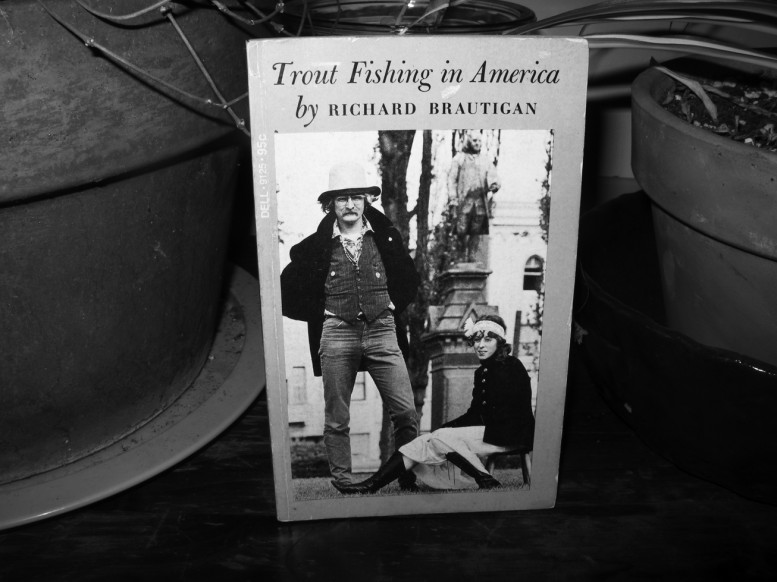
Trout Fishing in America is not at all about trout fishing. Trout fishing is merely an ambiguous metaphor. The cover of the book is a photograph of Richard Brautigan and a friend identified as Michaela Le Grand, whom he referred to as his "Muse." The photo was taken in San Francisco's Washington Square Park in front of the Benjamin Franklin statue. The first chapter of the book is an extended and fanciful description of this photo. Richard Brautigan was a seminal figure in 196os literature. He died of a self-inflicted .44 Magnum gunshot wound to the head. He left a suicide note that simply read: "Messy, isn't it?"
[NOVELS] A Wild Surge of Guilty Passion

"Based on a real case whose lurid details scandalized Americans in 1927 and sold millions of newspapers, acclaimed novelist Ron Hansen's latest work is a tour de force of erotic tension and looming violence. Trapped in a loveless marriage, Ruth Snyder is a voluptuous, reckless, and altogether irresistible woman who wishes not only to escape her husband but that he die—and the sooner the better. No less miserable in his own tedious marriage is Judd Gray, a dapper corset-and-brassiere salesman who travels the Northeast peddling his wares. He meets Ruth in a Manhattan diner, and soon they are conducting a white-hot affair involving hotel rooms, secret letters, clandestine travels, and above all, Ruth's increasing insistence that Judd kill her husband. Could he do it? Would he? What follows is a thrilling exposition of a murder plan, a police investigation, the lovers' attempt to escape prosecution, and a final reckoning for both of them that lays bare the horror and sorrow of what they have done. Dazzlingly well-written and artfully constructed, this impossible-to-put-down story marks the return of an American master known for his elegant and vivid novels that cut cleanly to the essence of the human heart, always and at once mysterious and filled with desire." More...

